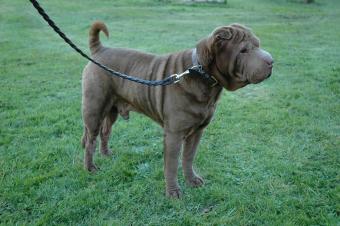Blue Coated Breeds

Rebecca Nelson/Photodisc via Getty Images
1. Australian Cattle Dog

Paulo Hoeper/Moment via Getty Images
2. Kerry Blue Terrier

Ekaterina Gorokhova/iStock/Getty Images Plus via Getty Images
3. Neapolitan Mastiff

Purple Collar Pet Photography/Moment Open via Getty Images
4. Weimaraner

Mint Images - Norah Levine via Getty Images
5. Whippet

Denise Balyoz Photography/Moment Open via Getty Images
6. Irish Wolfhound

Zuzule/istock/getty images plus via Getty Images
7. Chinese Shar-Pei

Michel VIARD/iStock/Getty Images Plus via Getty Images
8. Great Dane

Barbara Rich/Moment via Getty Images
9. American Staffordshire Terrier

Copyright Radu Dan/Moment via Getty Images
10. Bluetick Coonhound

Wirestock/iStock/Getty Images Plu via Getty Images
11. Dachshund

Ying Ling Lim / EyeEm via Getty Images
12. French Bulldog

Rebecca Nelson/DigitalVision via Getty Images
13. Chihuahua

stephanie_grafvocat/RooM via Getty Images
Choosing a Blue Dog Breed

Copyright Radu Dan/Moment via Getty Images
© 2025 LoveToKnow Media. All rights reserved.







